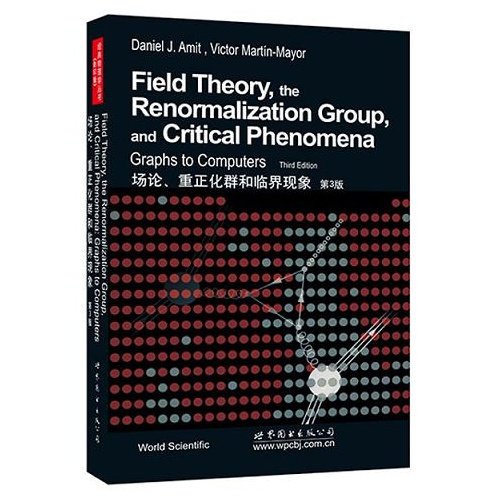- ISBN:9787510087707
- 装帧:一般胶版纸
- 册数:暂无
- 重量:暂无
- 开本:16开
- 页数:543
- 出版时间:2015-03-01
- 条形码:9787510087707 ; 978-7-5100-8770-7
本书特色
本书被列为学习场论入门的核心教材,很少有教材能够做到如此恰到好处,详略得当,难易适中。将粒子物理学的场论方法和概念与临界现象和统计力学中的巧妙衔接起来。**版已经被证明了是一本十分有用的教材,第二版又详细介绍了有限尺寸标度、一般性和多耦合常数的临界行为,这些都是物理学家做研究很有价值的工具。 目次:**部分(基本观点和技巧:临界现象理论中的相关概念和观点;函数积分有关的相变问题公式;量子场论中的函数积分;顶点函数和对称性破缺;圈数和分量数的扩张;重整化;重整化群和临界区域中的标度;临界指数的计算;(第二部分)导论;主标度之外;一般性综述;多耦合临界行为;交叉现象;二维附近的临界现象;(第三部分)非扰动和数值方法:实空间方法;有限尺寸标度;蒙特卡洛方法、数值场论。附录:程序案例。 读者对象:物理专业高年级本科生、研究生和相关专业的科研人员。
内容简介
本书被列为学习场论入门的核心教材,很少有教材能够做到如此恰到好处,详略得当,难易适中。将粒子物理学的场论方法和概念与临界现象和统计力学中的巧妙衔接起来。**版已经被证明了是一本十分有用的教材,第二版又详细介绍了有限尺寸标度、一般性和多耦合常数的临界行为,这些都是物理学家做研究很有价值的工具。 目次:**部分(基本观点和技巧:临界现象理论中的相关概念和观点;函数积分有关的相变问题公式;量子场论中的函数积分;顶点函数和对称性破缺;圈数和分量数的扩张;重整化;重整化群和临界区域中的标度;临界指数的计算;(第二部分)导论;主标度之外;一般性综述;多耦合临界行为;交叉现象;二维附近的临界现象;(第三部分)非扰动和数值方法:实空间方法;有限尺寸标度;蒙特卡洛方法、数值场论。附录:程序案例。 读者对象:物理专业高年级本科生、研究生和相关专业的科研人员。
目录
作者简介
David Yevick是国际知名学者,在数学和物理学界享有盛誉。本书凝聚了作者多年科研和教学成果,适用于科研工作者、高校教师和研究生。
-

13次时空穿梭之旅
¥18.7¥59.0 -

递归求解
¥9.4¥28.0 -

勒维特之星-大发现系列丛书
¥5.0¥16.0 -

核科学基本原理
¥14.5¥39.8 -

技术史入门
¥15.4¥48.0 -

天文学卷-异想天开-古今中外天文简史-《中国大百科全书》普及版
¥6.1¥19.0 -

科学哲学——科学家的视角
¥43.9¥78.0 -

发现之旅数的王国——世界共通的语言
¥41.1¥68.0 -

声音简史
¥23.9¥52.0 -

青少年及成.人普林斯顿数学分析读本
¥43.1¥69.0 -

130种美鸟彩图馆
¥15.3¥39.8 -

疯狂实验史-II
¥23.7¥36.0 -

控制论的发生与传播研究
¥6.0¥15.0 -

北宋科技思想研究纲要
¥9.8¥26.0 -

概率统计
¥5.7¥11.0 -

新科学时代的思考
¥46.2¥78.0 -

智慧宫029梦游者:西方宇宙观念的变迁
¥75.5¥128.0 -

现代生物特征识别技术
¥34.8¥49.0 -

羌塘盆地构造演化与油气生成和保存
¥229.0¥318.0 -

中国母乳营养成分地理分布图集(2024年)
¥58.2¥88.0













